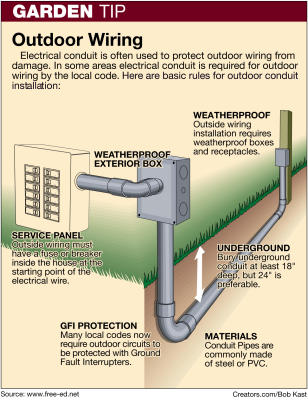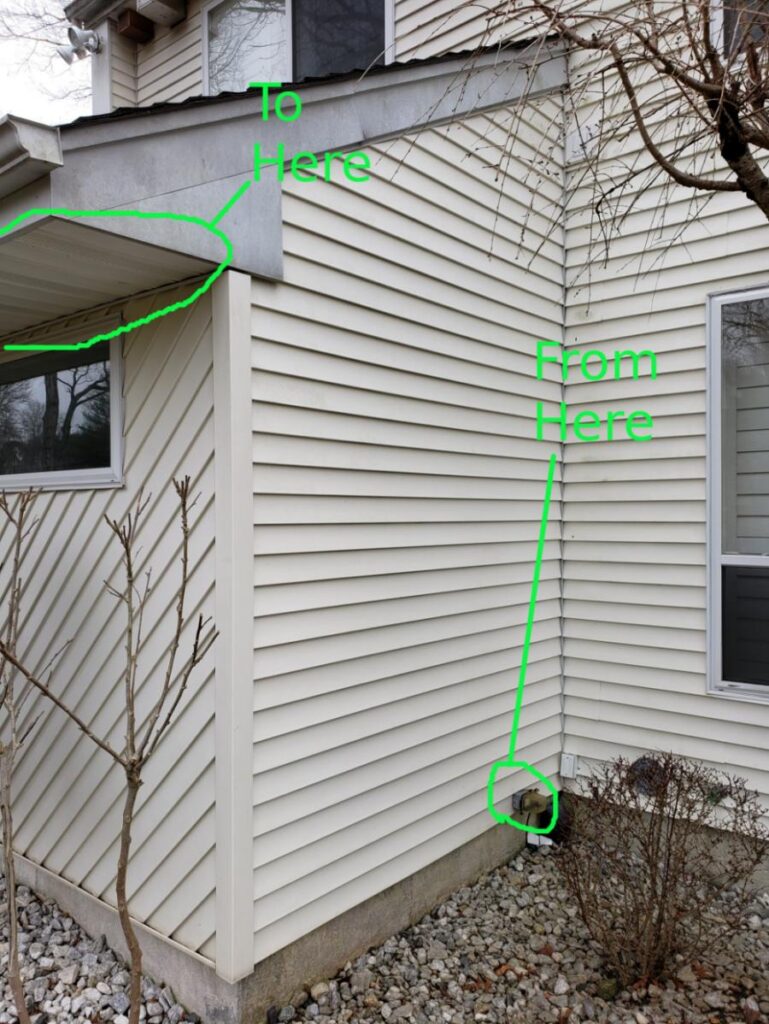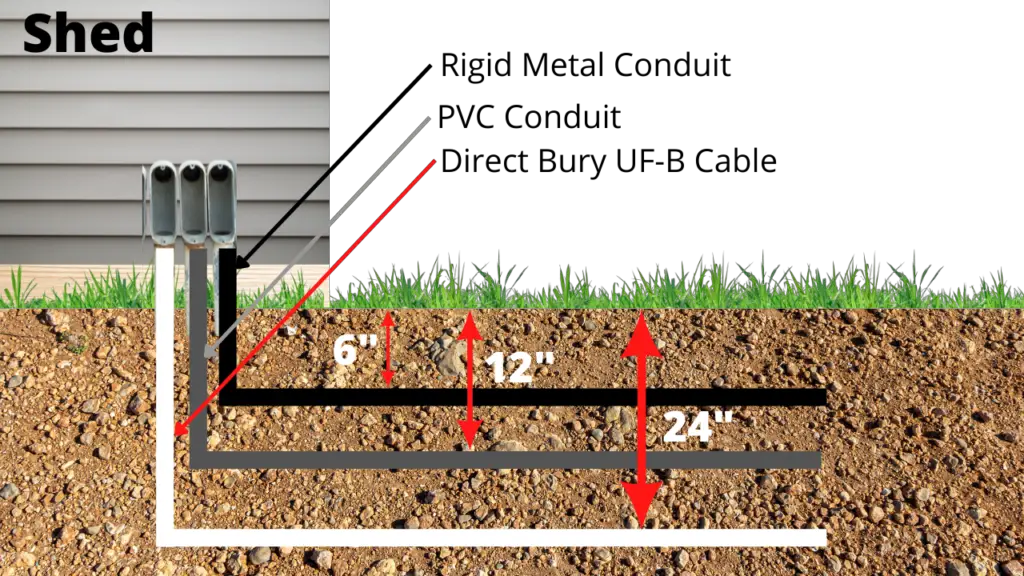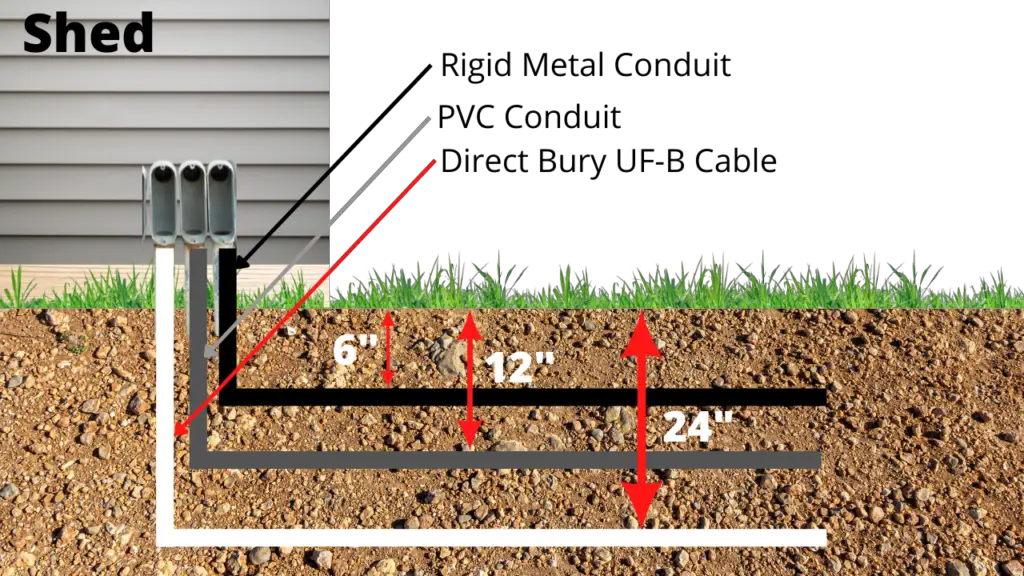Have you ever wondered if outdoor wiring needs to be installed in conduit? Well, you’re in luck! In this article, we will explore the importance of using conduit for outdoor wiring and the potential risks you may face if you choose not to. From safety concerns to legal requirements, we will provide all the information you need to make an informed decision about your outdoor electrical installations. So, let’s get started and shed some light on this important topic!


Does Outdoor Wiring Need To Be In Conduit?
If you’re planning to add outdoor electrical wiring to your home or property, you may be wondering whether or not it needs to be placed in conduit. Conduit is a protective covering that houses electrical wires, providing insulation and preventing damage. While it’s not always required, using conduit for outdoor wiring comes with numerous benefits. In this article, we will explore the basics of outdoor wiring, the function of conduit, when it is required, and alternative options available. We will also discuss factors to consider when choosing conduit, tips for installation, and how to properly maintain and repair outdoor wiring. By the end of this article, you’ll have a comprehensive understanding of outdoor wiring and the role of conduit in ensuring its safety and functionality.
Outdoor Wiring Basics
Before delving into the specifics of conduit and its application in outdoor wiring, it’s important to grasp the fundamentals of outdoor electrical installations. Outdoor electrical wiring is essentially an extension of the electrical system inside your home, allowing you to power various outdoor fixtures and appliances. From lighting fixtures to outlets for your outdoor entertainment area, installing outdoor wiring can greatly enhance the functionality and aesthetic appeal of your outdoor space.


Understanding outdoor electrical wiring
Outdoor electrical wiring functions much in the same manner as indoor wiring, with the primary differences lying in the environmental conditions and safety considerations. Outdoor wiring is exposed to a range of external factors such as weather, temperature variations, and physical damage. Therefore, it is crucial to ensure that outdoor wiring is designed and installed to withstand these challenges.
Electrical safety codes and regulations in outdoor environments
When it comes to outdoor electrical installations, adherence to electrical safety codes and regulations is paramount. These codes are set in place to protect individuals from electrical hazards and ensure the safe operation of electrical systems. Local building codes and regulations differ, so it’s essential to consult with a qualified electrician or local authorities to determine the specific requirements for outdoor electrical installations in your area.


What is Conduit?
Conduit is a protective housing for electrical wires that safeguards them from physical damage, moisture, and other external factors. It serves as an added layer of insulation and protection, encapsulating the wires and creating a barrier between them and the elements. Conduit comes in various materials, sizes, and configurations to suit different types of wiring installations and environmental conditions.
Definition and function of conduit
The primary function of conduit is to house electrical wires and provide physical protection. It acts as a shield, preventing accidental damage to the wires from factors such as impact, penetration, or exposure to harsh elements. Additionally, conduit enhances the organization of wires, making it easier to locate and troubleshoot any potential issues that may arise.


Types of conduit
There are several types of conduit available, each with its own set of advantages and applications. The most common types of conduit used for outdoor wiring include:
-
Rigid Metal Conduit (RMC): Made of galvanized steel, RMC is a robust and durable conduit option. It provides excellent protection against physical damage and can withstand harsh environmental conditions. RMC is commonly used in areas where the conduit may be exposed to potential mechanical abuse.
-
Electrical Metallic Tubing (EMT): EMT is a lightweight and cost-effective conduit option. Made of thin-walled steel, it is easy to work with and suitable for installations with minimal exposure to physical abuse. EMT is commonly used for short outdoor runs, such as connecting outdoor outlets.
-
PVC Conduit: PVC conduit is a popular choice for outdoor wiring due to its affordability, ease of installation, and resistance to rust. It is lightweight, corrosion-resistant, and available in a variety of sizes. PVC conduit is commonly used for underground installations and areas where moisture resistance is essential.
Benefits of Using Conduit for Outdoor Wiring
While conduit may not always be required for outdoor wiring, there are several benefits to using it:
-
Protection from physical damage: Conduit acts as a protective barrier, shielding the electrical wires from accidental damage caused by factors like impact, abrasion, or exposure to sharp objects. This is particularly important in outdoor environments where the wiring may be susceptible to accidental contact with garden tools or other objects.
-
Resistance to moisture and water: Outdoor environments expose electrical wiring to moisture, rain, and other forms of water intrusion. Conduit provides an extra layer of defense, helping to safeguard the wires from moisture-related issues, such as short circuits, corrosion, and electrical shocks.
-
Prevention of electrical shorts and fires: By enclosing the wires, conduit reduces the risk of electrical shorts or sparks that can lead to fires. It helps contain any potential arcing or overheating, ensuring the safety and reliability of your outdoor electrical system.
-
Easier troubleshooting and repairs: In the event of a malfunction or electrical issue, having the wiring enclosed in conduit makes it easier to identify and troubleshoot the problem. The wires are neatly organized and protected, allowing for efficient repair or replacement without extensive digging or disruption to your outdoor space.


When is Conduit Required?
The requirement for conduit in outdoor wiring installations depends on various factors, including local electrical codes, the type of outdoor wiring, and the specific project at hand. It is crucial to consult with local authorities or a qualified electrician to determine the specific requirements for your area.
-
Considering local electrical codes: Each locality may have its own set of electrical codes and regulations that dictate the use of conduit for outdoor wiring. These codes are designed to ensure the safety and reliability of electrical installations. Not adhering to these codes can result in fines, unsafe installations, or other legal consequences.
-
Selecting suitable locations for conduit: Depending on the nature of your outdoor wiring project, the use of conduit may be required in specific locations. For example, in areas where the wiring is exposed to potential physical damage or where moisture intrusion is likely, conduit may be necessary to comply with safety standards.
-
Conduit requirements for specific outdoor wiring projects: Different types of outdoor wiring projects may have specific conduit requirements. For example, when installing a new outdoor outlet, conduit might be necessary to protect the wiring from physical damage and moisture. On the other hand, low-voltage lighting installations may not require conduit in certain circumstances. Understanding the specific requirements for your project is essential to ensure a safe and compliant installation.
Alternatives to Conduit for Outdoor Wiring
While conduit serves as an effective means of protecting outdoor wiring, there are alternative options available. These alternative methods offer varying degrees of protection and may be suitable depending on the specific requirements of your project:
-
Direct burial wiring: Direct burial wiring involves burying the electrical cables directly in the ground without the use of conduit. This method is typically used for low-voltage systems, such as landscape lighting. However, it is important to ensure that the cables are properly rated for direct burial and comply with local electrical codes.
-
Underground feeder (UF) cable: UF cable is an alternative to conduit for burying electrical wiring underground. It is specifically designed for direct burial and can be more cost-effective than using conduit. UF cable contains insulated conductors and is protected by a moisture-resistant sheath.
-
Rigid nonmetallic conduit (RNC): Rigid nonmetallic conduit, also known as plastic conduit, is a lightweight and corrosion-resistant option. It is typically used for underground installations and can be a suitable alternative to traditional metal conduit. RNC is available in various sizes and can be used for both outdoor and indoor applications.
-
Liquid-tight flexible metal conduit (LFMC): LFMC is a flexible conduit option that offers protection against moisture and physical damage. It is made of a coiled metal core and a waterproof coating, making it suitable for outdoor installations where flexibility is required. LFMC is often used in areas where the conduit may be exposed to water, such as outdoor spas or irrigation systems.
Factors to Consider when Choosing Conduit
When selecting conduit for your outdoor wiring, several factors should be taken into consideration to ensure optimal performance and longevity:
-
Type of outdoor wiring: The type of outdoor wiring you plan to install will play a significant role in determining the type of conduit needed. Different wiring types have specific requirements for insulation and protection. For example, low-voltage systems may have different conduit requirements compared to standard 120-volt systems.
-
Environmental conditions: Outdoor wiring is exposed to various environmental conditions, such as temperature extremes, moisture, and UV exposure. It’s important to choose conduit that can withstand these conditions. Factors such as resistance to corrosion, UV resistance, and moisture resistance should be considered when making your selection.
-
Budget and installation requirements: Depending on your budget and installation preferences, certain types of conduit may be more suitable than others. Consider factors such as cost, ease of installation, and compatibility with the wiring system. Consulting with a professional electrician can help you determine the best conduit option within your budget and installation requirements.
Tips for Installing Conduit for Outdoor Wiring
Proper installation of conduit is crucial to ensure the safety and functionality of your outdoor wiring system. Here are some tips to consider when installing conduit for your outdoor wiring:
-
Planning the installation route: Carefully plan the route for the conduit, taking into account any potential obstacles or areas of vulnerability. Consider the aesthetics, accessibility, and efficiency of the route to ensure the wiring is well-protected while remaining accessible for future troubleshooting or repairs.
-
Proper conduit sizing and spacing: Be sure to choose the correct size of conduit to accommodate the number and size of wires being installed. Ensure that the conduit is properly spaced and secured to prevent sagging or damage. Following manufacturer guidelines and local electrical codes will help ensure proper conduit sizing and spacing.
-
Joining and securing conduit: When connecting separate sections of conduit, use appropriate connectors and fittings to ensure a secure and watertight connection. Properly and securely fasten the conduit using straps or clamps to prevent movement or damage after installation.
-
Grounding and bonding considerations: Outdoor electrical installations typically require appropriate grounding and bonding to ensure electrical safety. Understand the grounding and bonding requirements for your specific outdoor wiring project and ensure proper techniques are followed during installation.
Maintaining and Repairing Outdoor Wiring in Conduit
Once your outdoor wiring is installed within conduit, it is important to stay on top of regular maintenance and be prepared for any necessary repairs. Here are some guidelines for maintaining and repairing outdoor wiring in conduit:
-
Preventing moisture and rust buildup: Regularly inspect the conduit for any signs of moisture intrusion or rust buildup. Address any issues promptly to prevent damage to the wires and ensure optimal performance. Applying appropriate sealants or conduits with enhanced moisture resistance can help mitigate these issues.
-
Performing regular inspections and maintenance: Schedule periodic inspections of your outdoor wiring to identify any signs of wear, damage, or other potential issues. Check for loose connections, damaged conduit, or any exposed wiring. Additionally, ensure that any vegetation is kept clear of the conduit to avoid potential damage.
-
Troubleshooting common electrical issues: If you encounter electrical issues or malfunctions, proper troubleshooting techniques are essential. Check the conduit and wiring for any visible signs of damage or loose connections. If the issue persists, it’s recommended to consult with a qualified electrician to identify and address the underlying problem.
Conclusion
While outdoor wiring may not always require the use of conduit, it is recommended for its numerous benefits and protections it provides. From shielding the wiring from physical damage to preventing moisture-related issues, conduit plays a vital role in ensuring the safety and reliability of your outdoor electrical system. When considering conduit for outdoor wiring, take into account factors such as local electrical codes, environmental conditions, and the specific requirements of your project. By installing conduit properly, maintaining it regularly, and troubleshooting any issues that arise, you can enjoy a safe and functional outdoor electrical system for years to come.







